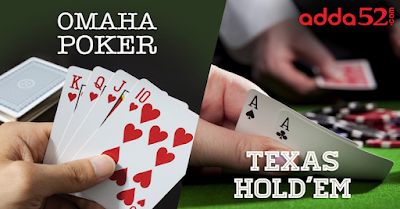HOW TO PLAY OMAHA: If you’ve been introduced to poker this century, you probably know how to play Texas Hold ‘Em. A game that takes ten minutes to learn and a lifetime to master. Omaha takes longer to learn, so this is the start of a three-part series.
The biggest difference between Texas Hold ‘Em and Omaha is that you’ll get four cards to start with instead of two. Then, you make your best five-card high-hand with the five community cards. The other difference is that you must use exactly two of your own cards with three of the community cards.
If that sounds confusing, it is. Especially when you play the game hi-low; more on that later. First, let’s look at a standard $2/$4 limit game:
Betting rounds are the same as Texas Hold ‘Em with a button signifying the dealer spot that gets cards last and acts last after the flop. The first spot after the button posts the small blind of $1. The next spot posts the mandatory big blind of $2.
After each player has their four cards, the player left of the big blind must call $2, raise to $4, or fold. The action continues around the table with the blinds acting last. All remaining players get to see the flop of three community cards.
Next, play starts with the first player left of the button who may check or bet $2. If there is a bet, remaining players must call, raise, or fold. After the 4th community card (the turn), the minimum wager becomes $4, and it’s the same after the river or 5th card.
OMAHA Tips
There be variance, Matey. In Texas Hold ‘Em, a pair of aces is the best starting hand. The worst is 7-2 unsuited. In Omaha, a starting hand of Ace-Ace King-King double suited is the best, but Ace-Ace 7-2 unsuited is weak. There are 1,326 starting hand combinations in Texas Hold ‘Em. There are 270,725 in Omaha. Unfortunately, most are garbage.
Starting with four cards means there are ample opportunities for your opponents to make straights and then the flushes that crush them. And, no straight or flush on the turn is safe when the board pairs on the river. There are too many ways to make a full house!
Still, the ability to make straights and flushes in Omaha is the reason that the second-best starting hand is Ace-Ace Jack-Ten double suited. That starter lets you make both Broadway straights and nut flushes.
To emphasize why there is so much variance in Omaha, let’s look at a big hand that happens in Texas Hold ‘Em : the best starting hand versus the second-best starting hand or Ace-Ace vs. King-King heads-up. With this hand, the Aces will win 82% of the time. That makes it a 4-1 favorite. Nice!
In Omaha, the best starter of Ace-Ace King-King double suited vs. Ace-Ace Jack-Ten double suited is just a 33% winner (41% tie and 26% loser). The best hand has just a 7% edge! So, make sure your starting hands consist of high cards, preferably pairs, and have a chance to redraw. That means when you don’t hit your pair, you can make a flush or a straight. And when you do have an edge, raise for value!





